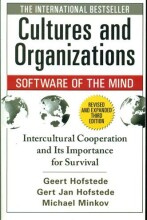Summary: Language In Mind An Introduction To Psycholinguistics | 9781605357058 | Julie Sedivy
- This + 400k other summaries
- A unique study and practice tool
- Never study anything twice again
- Get the grades you hope for
- 100% sure, 100% understanding
Read the summary and the most important questions on Language in Mind An Introduction to Psycholinguistics | 9781605357058 | Julie Sedivy
-
1 Science, Language, and the Science of Language
This is a preview. There are 3 more flashcards available for chapter 1
Show more cards here -
What is the downside of answering with exact answers and absolute rights to test students' knowledge, according to Isaac Asimov?
Minimizes the necessity of thinking, which pleases both students and teachers. -
1.1 What Do Scientists Know about Language?
This is a preview. There are 6 more flashcards available for chapter 1.1
Show more cards here -
What is the scientific approach of psycholinguistics?
They use experimental methods to study the psychological machinery that drives language learning, language comprehension, and language production. -
What do theoretical linguists focus on?
They focus on providingdetailed descriptions andanalyses of thestructure oflanguage . Paying close attention to the patterns found in language to examine constraints that language places on how sounds, words, or sentenced can be assembled. -
What do computational linguists focus on?
They write and implementcomputer programs toexplore the data structure of human language or tosimulate how humans might learn and uselanguage . -
What makes the approach of computational linguists extremely useful?
It is useful foruncovering patterns that requiresearching through amounts ofdata . They also help to evaluate whether general ideas about human mental operations can be successfully implemented in practice, finding out which theory is more realistic than others. -
What do neurolinguists and cognitive neuroscientists focus on?
They study the brain and how this complex organ carries out the mental operations that are required for learning or using language. -
What do neurolinguists and cognitive neuroscientists investigate in the brain?
The role of specific regions and networks, correlate specific brain responses with psychological operations, and asses the consequences of brain damage, all with the aim of understanding how the brain's "hardware" is able to run the "software" involved in learning or using language. -
What are biolinguists trying to trace?
The long explanatory line that links the workings of genes with the
structure of the brain and, ultimately, the mental operations needed to be competent at language. -
What do language typologists focus on?
They are likenaturalists ,collecting data samples from manydifferent modernlanguages , andhistorical linguists are likearcheologists ,reconstructing extinctancestors and establishing theconnections andrelationships among existinglanguages . -
What is it that language typologists and historical linguists can help us with?
Both take a broad view of language that help us understand some of the forces at play in shaping language within an individual's mind and brain. Example: typologists might discover deep similarities that hold across many languages, and historical linguists might identify trends that predict the direction in
which languages are most likely to change.
- Higher grades + faster learning
- Never study anything twice
- 100% sure, 100% understanding
Topics related to Summary: Language In Mind An Introduction To Psycholinguistics
-
Origins of Human Language - Why Us?
-
Origins of Human Language - The Social Underpinnings of Language
-
Origins of Human Language - The Structure of Language
-
Origins of Human Language - The Evolution of Speech
-
Origins of Human Language - How Humans Invent Languages
-
Origins of Human Language - Language and Genes
-
Origins of Human Language - Survival of the Fittest Language?
-
Language and the Brain - Evidence from Damage to the Brain
-
Language and the Brain - Mapping the Healthy Human Brain
-
Language and the Brain - The Brain in Real-Time Action
-
Learning Sound Patterns - Where Are the Words?
-
Learning Sound Patterns - Infant Statisticians
-
Learning Sound Patterns - What Are the Sounds?
-
Learning Words - Words and Their Interface to Sound
-
Learning Words - Reference and Concepts - LANGUAGE AT LARGE How different languages cut up the concept pie
-
Learning Words - Understanding Speakers’ Intentions
-
Learning Words - Complex Words
-
Learning the Structure of Sentences

































